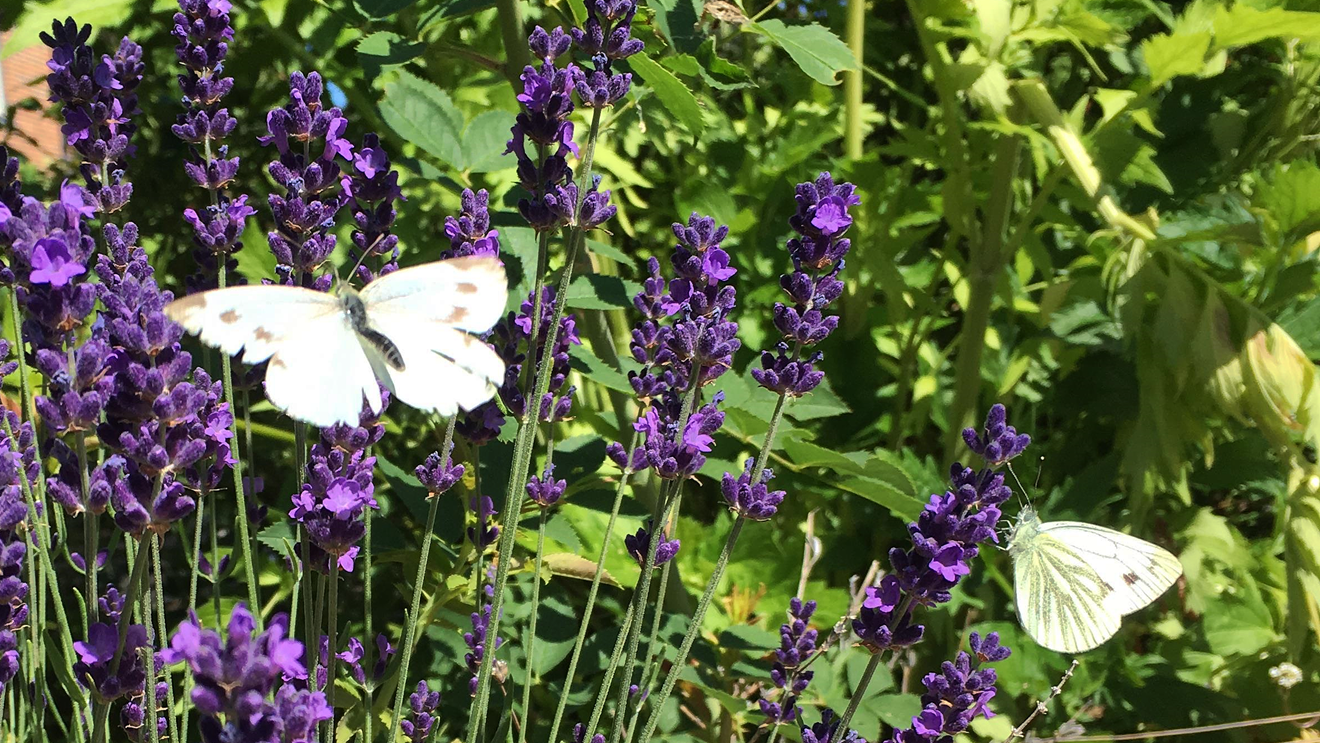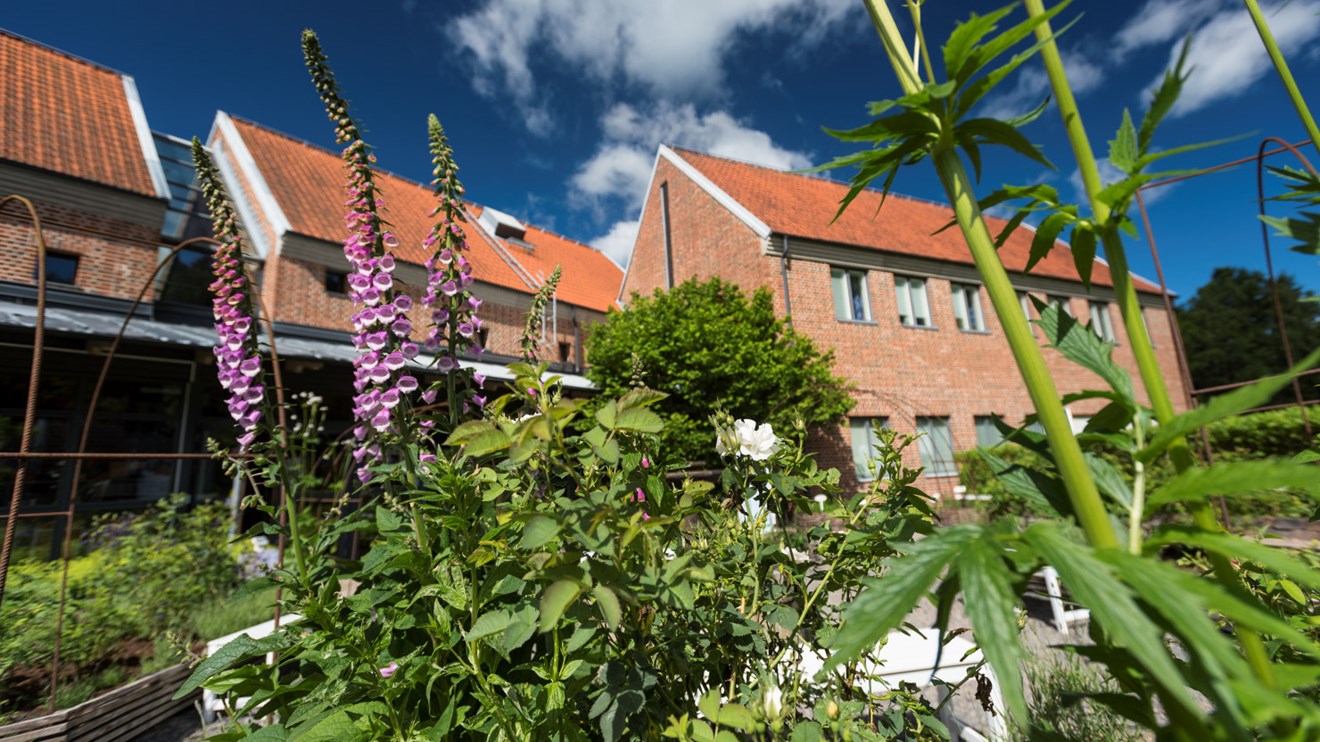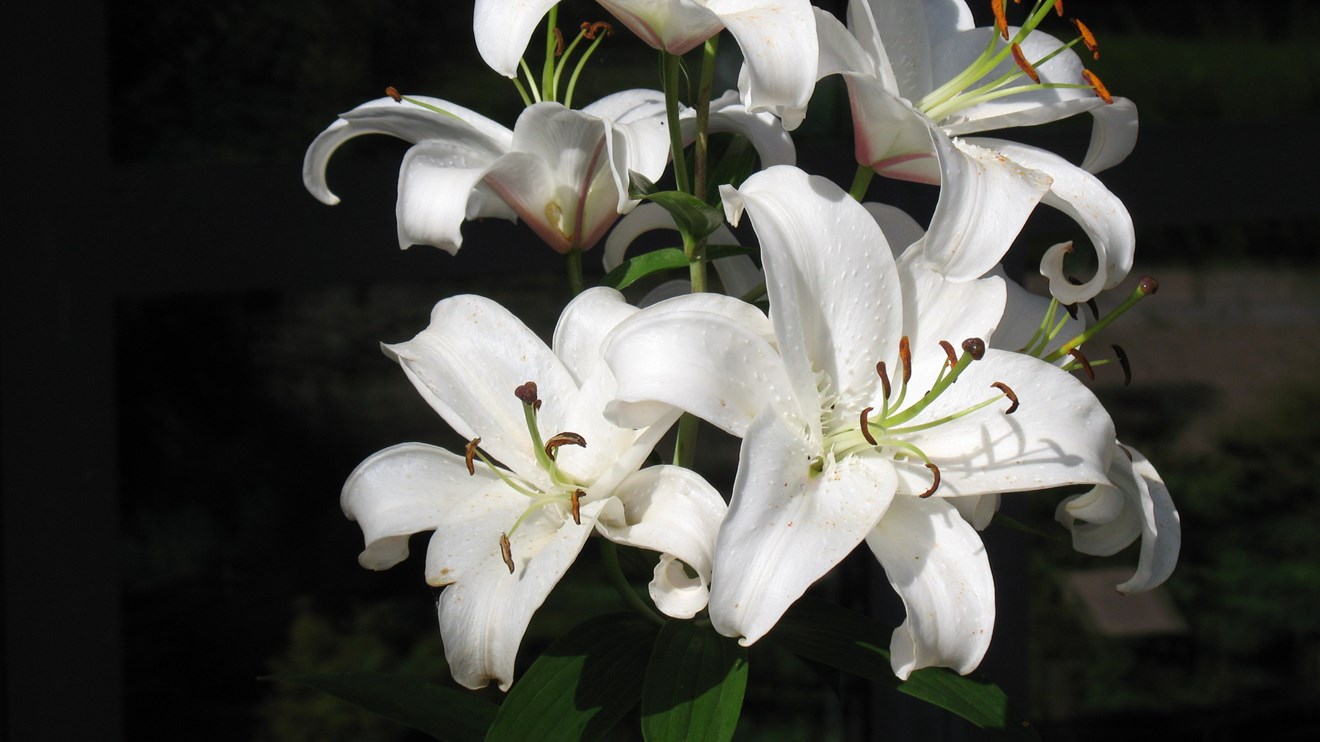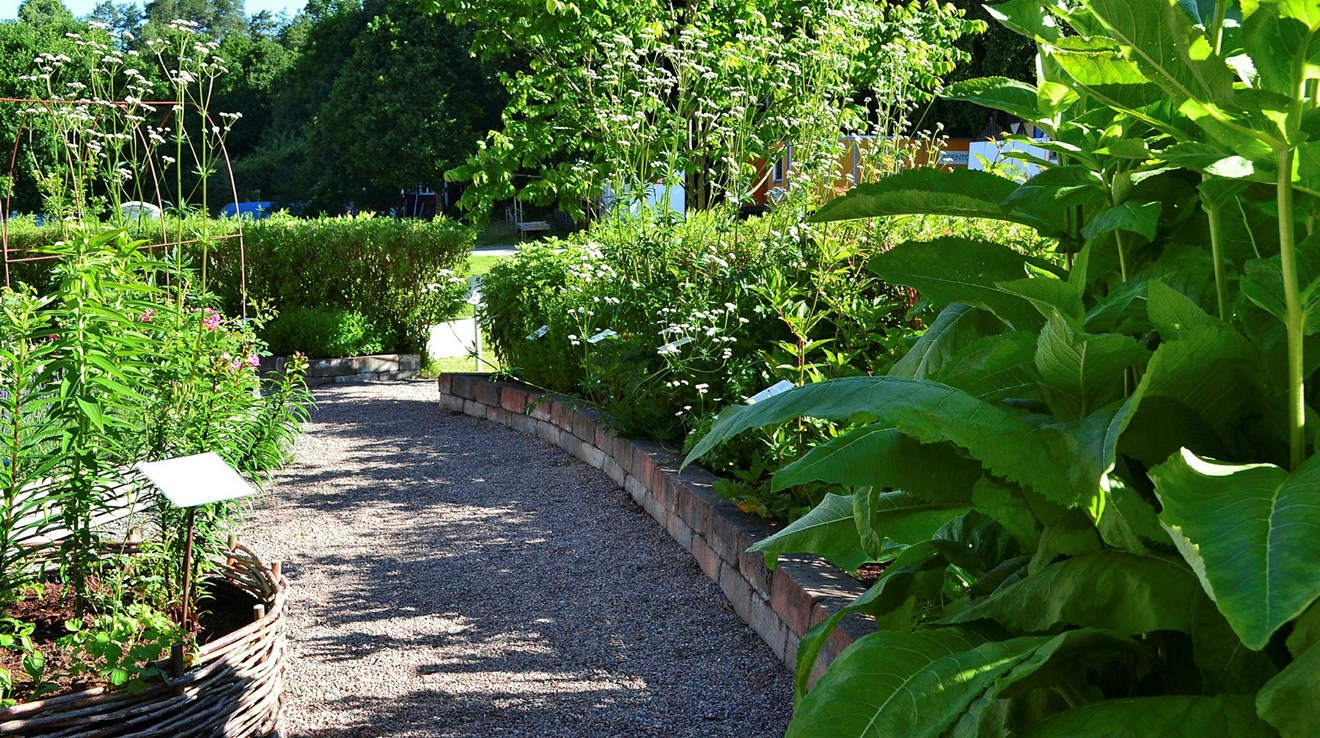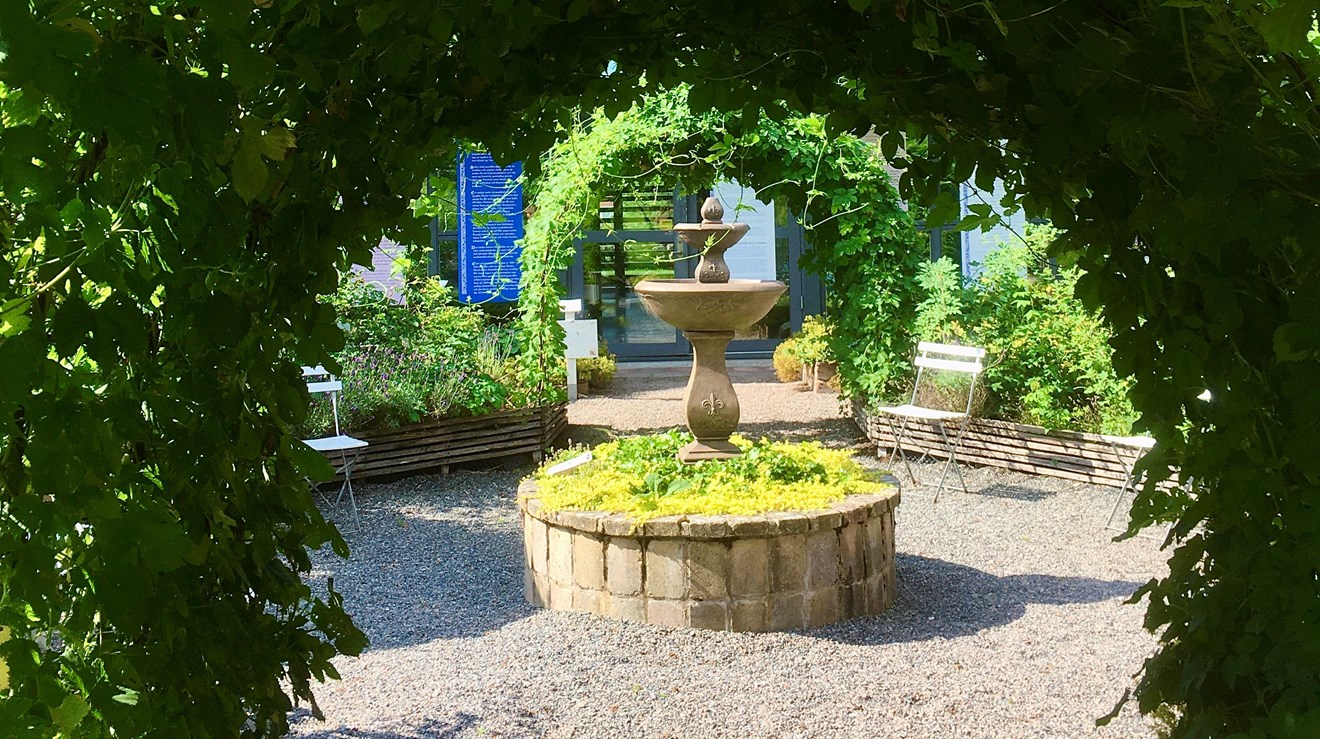Herb Garden
Welcome to the Herb Garden at Lödöse Museum. Here we explain all about the medicinal properties of medieval herbs as well as the many myths and unusual facts surrounding the herbs. The Herb Garden is a true oasis for our senses and a place where inspiration abounds.
If the weather is fine, you can relax with a coffee, and maybe something to eat, surrounded by the buzzing of bees and the scent of flowers. During the summer, we have a series of temporary exhibitions and events. Beside the Herb Garden, there is a beehive and an information board explaining how it works.
The mediaeval herb garden
As far back as prehistoric times, there has been widespread interest throughout the Nordic region in collecting medicinal plants. During the Middle Ages, monks and nuns introduced countless new species that were cultivated in the herb gardens of the monasteries and convents, including dill, salvia and fennel. The healing properties of the plants and guidance on their use are recorded in a number of handwritten manuscripts. Lavender, wormwood and lemon balm are just some of the many herbs mentioned in these documents.
Medicinal plants and meditation
Medicinal and kitchen plants were grown in the herb gardens of mediaeval monasteries and convents, although the herb garden also offered an opportunity for reflection and meditation. The cultivation beds were often raised and constructed from brick, stone or plaited willow. Many herb gardens had wells and trellises for climbing plants. Beside the herb garden, there was often an orchard and a cabbage garden. Inside the monastery or convent, the herbs were dried and distilled and made into creams and extracts.
A spiritual role
The mediaeval herb garden also has an important spiritual role to play, as it was regarded by many to be an earthly symbol of paradise and the hereafter. Several flowers were associated with the Virgin Mary, particularly the rose, which symbolised her beauty, and the white Madonna lily, which symbolised her purity. A Dominican monastery was founded in Lödöse in 1243, and excavation of the monastery revealed roots of apple trees, an indication that there was perhaps also a herb garden there at one time.
A living exhibition
The Herb Garden at Lödöse Museum is a living exhibition in every sense of the word. It is in a constant state of transition, inspired by everything we know about mediaeval herb gardens.
During the summer, the herb garden has places to sit, allowing you to relax and spend time among the vast array of exquisite colours and configurations. There is a series of gravel walkways and in the middle, there is a well with running water, the sound of which can be quite mesmerising. Take time out during your visit to experience this peaceful, soothing horticultural haven, and become more closely acquainted with the rich and varied collection of plants on display.

